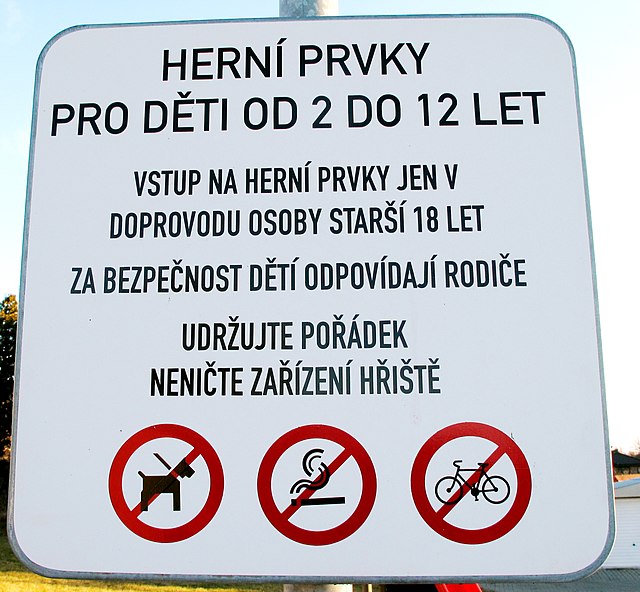The Cieszyn Silesian dialect or Teschen Silesian dialect is one of the Silesian dialects. It has its roots mainly in Old Polish and also has strong influences from Czech and German and, to a lesser extent, from Vlach and Slovak. It is spoken in Cieszyn Silesia, a region on both sides of the Polish-Czech border. It remains mostly a spoken language. The dialect is better preserved today than traditional dialects of many other West Slavic regions.
Rest in peace grave inscription in Cieszyn Silesian dialect.
Bilingual sign written in Cieszyn Silesian and Czech at Gorolski Święto.
Czech, historically also known as Bohemian, is a West Slavic language of the Czech–Slovak group, written in Latin script. Spoken by over 10 million people, it serves as the official language of the Czech Republic. Czech is closely related to Slovak, to the point of high mutual intelligibility, as well as to Polish to a lesser degree. Czech is a fusional language with a rich system of morphology and relatively flexible word order. Its vocabulary has been extensively influenced by Latin and German.
The Bible of Kralice was the first complete translation of the Bible into the Czech language from the original languages. Its six volumes were first published between 1579 and 1593.
Josef Dobrovský, whose writing played a key role in reviving Czech as a written language
Praha, Texas
A Czech-language sign at the entrance to a children's playground






